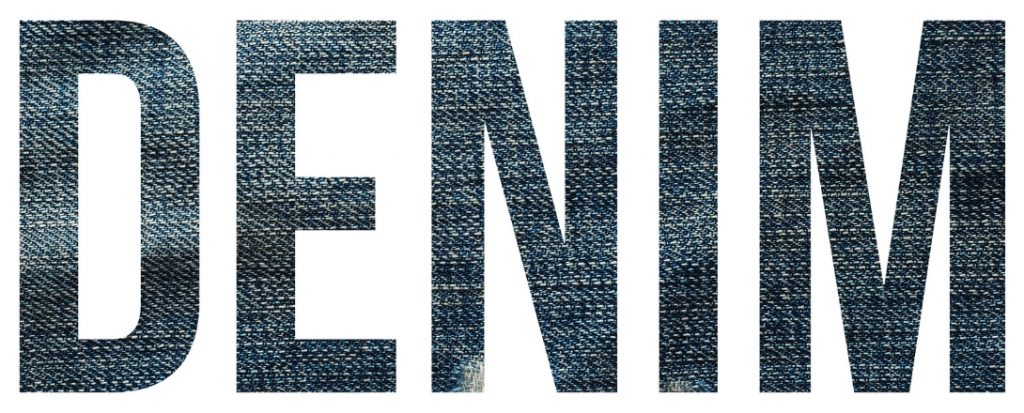Introduction:
Denim, with its rugged durability and iconic style, has evolved from humble workwear to a global fashion phenomenon. The journey of denim through time reflects not only changes in fashion but also societal shifts, making it a timeless and versatile fabric. This essay explores the rich history and evolution of denim, tracing its path from utilitarian workwear to a symbol of rebellion and ultimately, a wardrobe staple cherished across the globe.

The Birth of Denim:
Denim finds its roots in the sturdy fabric known as “serge de Nîmes,” woven in the French town of Nîmes. The fabric was later referred to as “denim” and gained popularity in the 19th century due to its durability. Levi Strauss, a Bavarian immigrant, played a pivotal role in the denim story when he partnered with Jacob Davis to create the first pair of riveted denim jeans in 1873. Originally designed for miners and laborers, these jeans became synonymous with hard work and resilience.
Denim in Workwear and Utility:
In its early years, denim was primarily associated with workwear due to its durability and resistance to wear and tear. The fabric’s indigo dye and robust construction made it ideal for garments that could withstand harsh conditions. Overalls, jackets, and work shirts crafted from denim became essential attire for laborers, symbolizing the industrious spirit of the working class.

Denim and Hollywood: A Symbol of Rebellion:
The 1950s witnessed the transformation of denim from workwear to a symbol of rebellion and youth culture, thanks in part to Hollywood. Icons like James Dean in “Rebel Without a Cause” and Marlon Brando in “The Wild One” popularized denim as the attire of choice for the anti-establishment. Denim, once reserved for labor, became a fashion statement, embodying the spirit of non-conformity and individualism.

The Cultural Revolution of the 1960s and 1970s:
The 1960s and 1970s marked a cultural revolution that embraced denim as a symbol of freedom and counterculture. The rise of denim-clad movements, from hippies to rockers, showcased the fabric’s versatility. Bell-bottom jeans, denim vests, and patchwork denim became emblematic of the era’s bold expression and rejection of societal norms.
Designer Denim: From Runway to Mainstream:
The 1980s brought a shift in the perception of denim as high-end designers began incorporating it into their collections. Brands like Calvin Klein and Gloria Vanderbilt elevated denim to a luxury status, introducing designer jeans that blurred the lines between casual and upscale fashion. This marked the beginning of denim’s journey from utilitarian workwear to a fashion staple embraced by all socioeconomic classes.

Denim Diversity in the 1990s and Early 2000s:
The 1990s and early 2000s witnessed a democratization of denim styles. From distressed jeans to wide-leg silhouettes, denim became a canvas for self-expression. High-waisted mom jeans, acid-washed denim, and denim skirts all had their moments, reflecting the ever-changing landscape of fashion. Denim embraced diversity, adapting to various trends while retaining its timeless appeal.
Sustainable Denim: A Modern Imperative:
As environmental awareness grew in the 21st century, so did the demand for sustainable fashion. Denim, notorious for its water-intensive production and chemical dyeing processes, faced scrutiny. However, the industry responded with innovations like organic cotton denim, recycled denim, and water-saving technologies. Sustainable denim emerged as a response to environmental concerns, aligning the fabric with modern values of eco-consciousness.

Denim Today: A Global Wardrobe Staple:
In the present day, denim remains a wardrobe staple worldwide. From classic blue jeans to denim jackets and skirts, the fabric continues to reinvent itself while preserving its inherent authenticity. Denim is no longer confined to a particular style or subculture; it is a versatile canvas that caters to a diverse range of tastes and preferences.

Conclusion:
The evolution of denim is a fascinating journey that mirrors the societal changes and fashion revolutions of different eras. From its origins as durable workwear to its symbolic association with rebellion and cultural movements, denim has transcended its utilitarian roots to become a timeless and global fashion staple. As sustainable practices gain traction, denim adapts to meet modern environmental standards while retaining its classic appeal. In the tapestry of fashion history, denim stands as a testament to resilience, adaptability, and the enduring allure of a fabric that has truly stood the test of time.